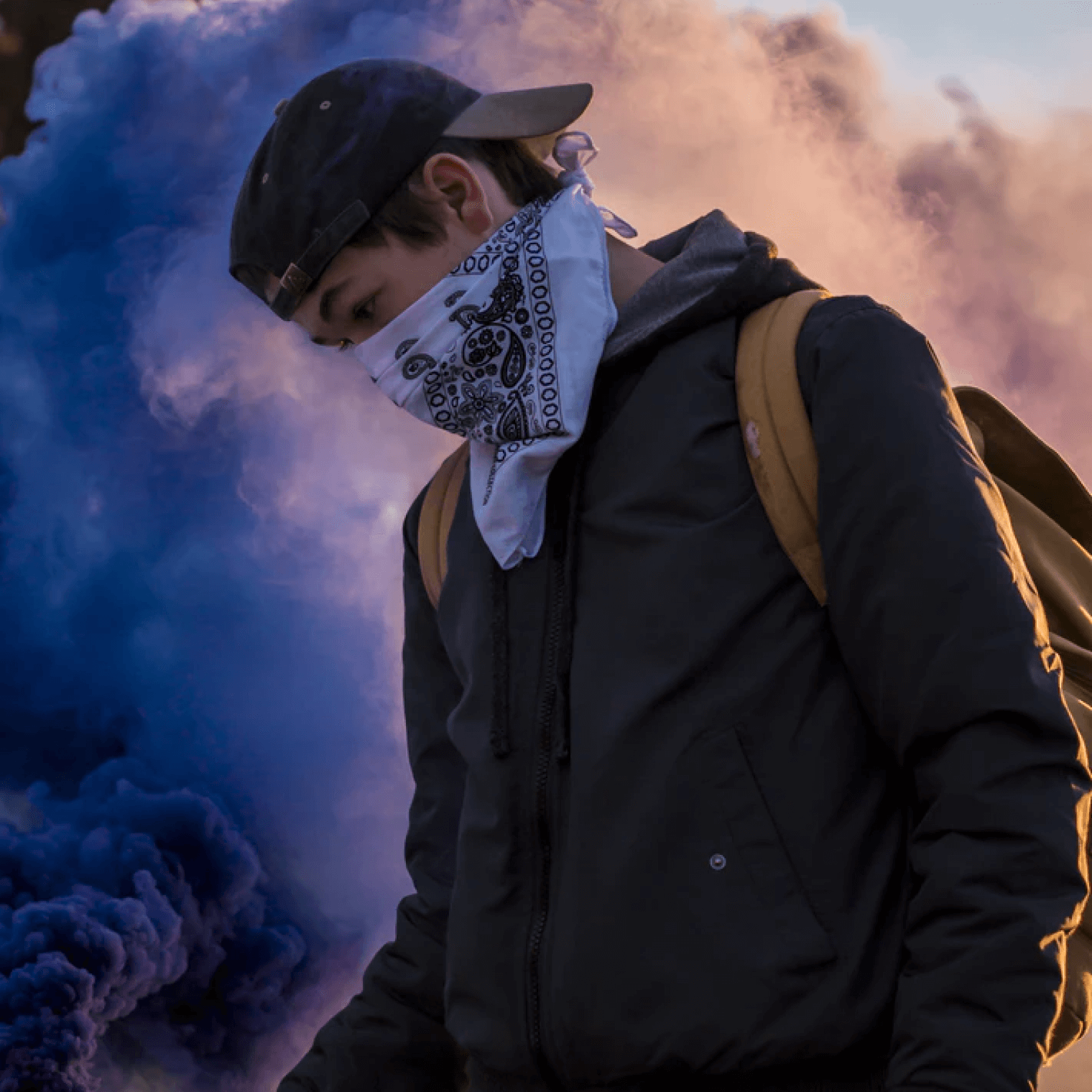In this article
Understanding Gore Videos
Gore videos are one of the most unsettling sides of the Internet. But weirdly enough, they continue to pull the attraction of a huge number of people. Perhaps it's a morbid curiosity, or its shock value.
In this guide, we will take a look at gore video definition, what they exactly are, the various categories of videos you may find, how they are being used, and the legal and moral lines you should never cross.
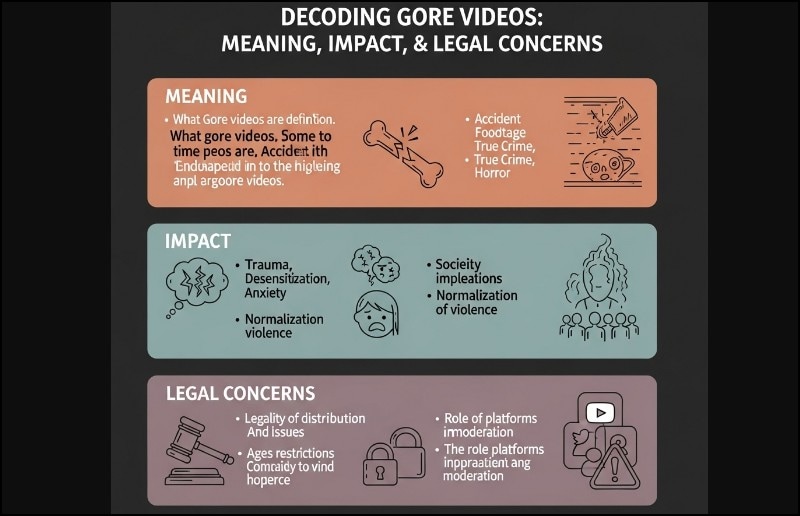
A gore video is any video that shows extreme injury, violence, or death. In video creation, it means real or staged footage with graphic visual elements to shock, disturb, or elicit a strong reaction.
Whether real or fake, gore videos are defined by their intense and often disturbing imagery that goes beyond what you see in regular media.

Well, we won't give you a detailed gore video explanation if we don't differentiate between gore videos and graphic content.
Gore vs Graphic Content
While gore and graphic content can be disturbing, they're not the same. Gore focuses specifically on showing vivid scenes of injury, mutilation, or death, whether real or simulated.
On the other hand, graphic content is a broader term that covers any visually intense or explicit material. This could include gore, but also sexual imagery, strong language, or other shocking visuals. In short, gore is a type of graphic content, but not all graphic content is gore.
Important Gore Video Terms
To get a better understanding of gore videos, you need to understand some basic concepts. These concepts include:
| Term | Meaning |
| NSFW/NSFL | "Not Safe for Work" / "Not Safe for Life," NSFW warns about inappropriate content for workplaces, while NSFL warns about disturbing, life-altering content. |
| Shock Video | A video designed to cause strong emotional reactions like fear, disgust, or outrage. |
| Cartel Video | These are clips released by criminal cartels. They often show executions, violence, or intimidation tactics. |
| Gore | Explicit depictions of extreme injury, violence, or death, whether real or simulated. |
| Execution Video | Footage showing a person being killed, often by firing squad, beheading, or hanging. |
| LiveLeak-Style | Content similar to what was hosted on the now-defunct LiveLeak platform, which includes raw, unfiltered footage of accidents, conflicts, or violence. |
| Viewer Discretion | A warning to let viewers know the video contains potentially disturbing or graphic content. |
| Snuff Film | An alleged genre of video where a real murder is committed and recorded for entertainment purposes. |
| Red Rooms | A dark web myth of live-streamed torture or murder, allegedly for paying audiences. |
| Shock Site | Websites created specifically to host disturbing or graphic content. |
| Trigger Warning | A notice given before content that could cause emotional distress, especially for trauma survivors. |
Types of Gore Videos
Generally, gore videos are classified into the following categories.
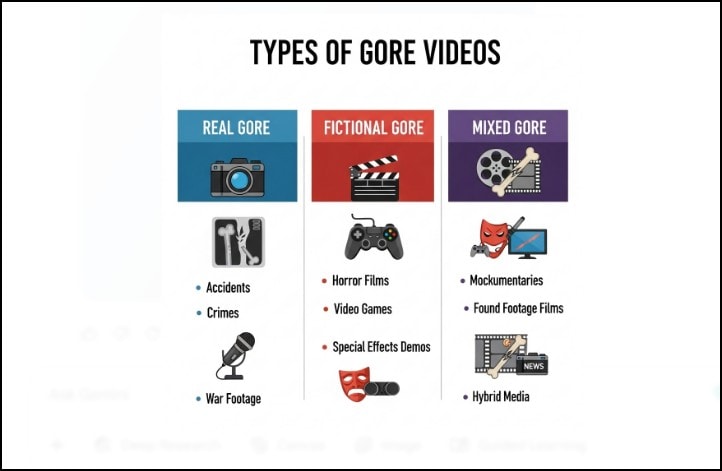
While these are the basic types of gore videos, the videos are further classified into different categories. These classifications include:
Classification of Gore Videos by Source
- Accidents: road crashes, workplace mishaps, or falls.
- War Footage: battles, bombings, or attacks captured in conflict zones.
- Crime Scenes: robberies, gang violence, or police encounters.
- Animal Cruelty: abuse or slaughter of animals.
- Medical Footage: surgery or injuries shown for training purposes.
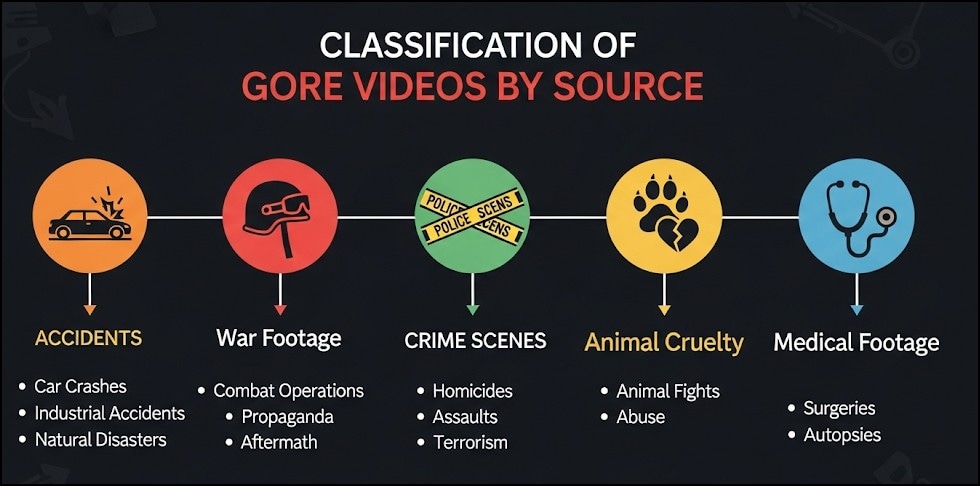
Classification of Gore Videos by Intent
- Educational: used in medical schools, safety training, or documentaries.
- Propaganda: shared by groups to intimidate or push a political message.
- Entertainment: fictional gore in films or games.
- Shock Value: posted only to disturb or grab attention.
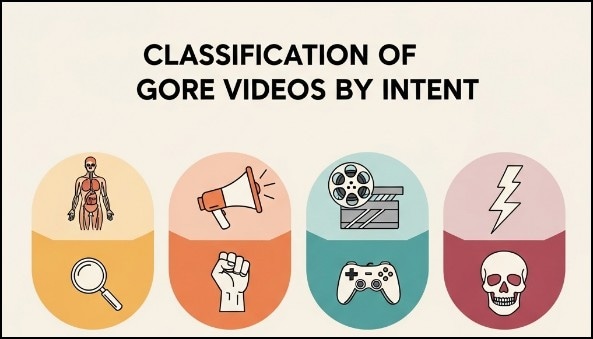
Infamous Platforms for Gore Content
Over the years, certain platforms have become known for hosting gore videos. LiveLeak was one of the most famous before it shut down. Now, you can access gore content on:
- Reddit communities
- The dark web
Creative and Practical Uses of Gore Videos
Gore videos might sound like they only exist to shock people, but that's not always the case. When handled carefully, they can have real creative, educational, or even social value.
Let's look at some ways they're used.
Horror Films

Documentaries
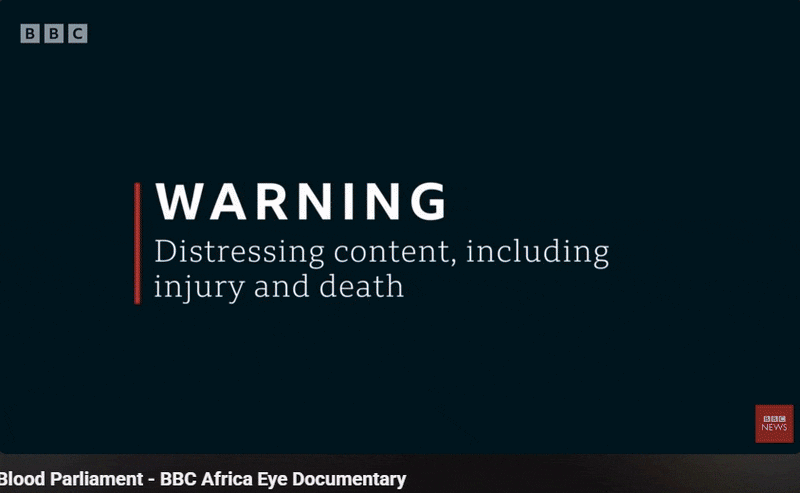
YouTube Reactions
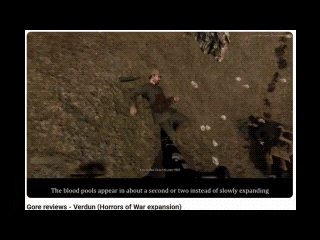
Video FX Tutorials
Education & Research

Medical Training
Game Development / VR Simulations
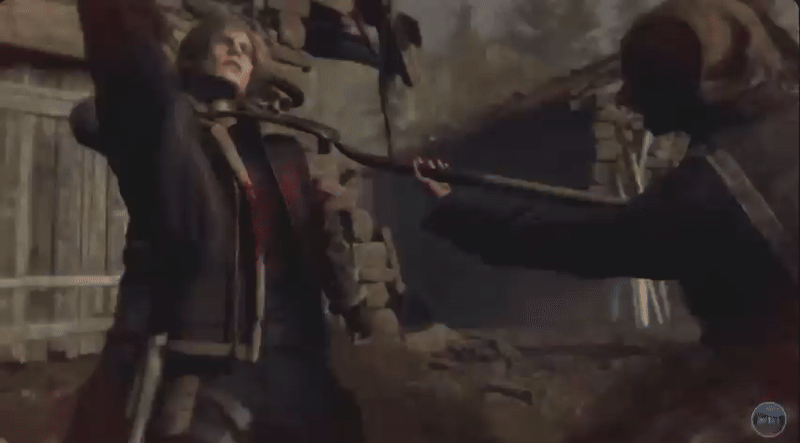
Activism or Political Messaging

Common Pitfalls in Using Gore Footage
Even when gore footage is used for a valid reason, creators can still fall into traps that cause unnecessary harm or trouble. Here's what often goes wrong and how to avoid it:
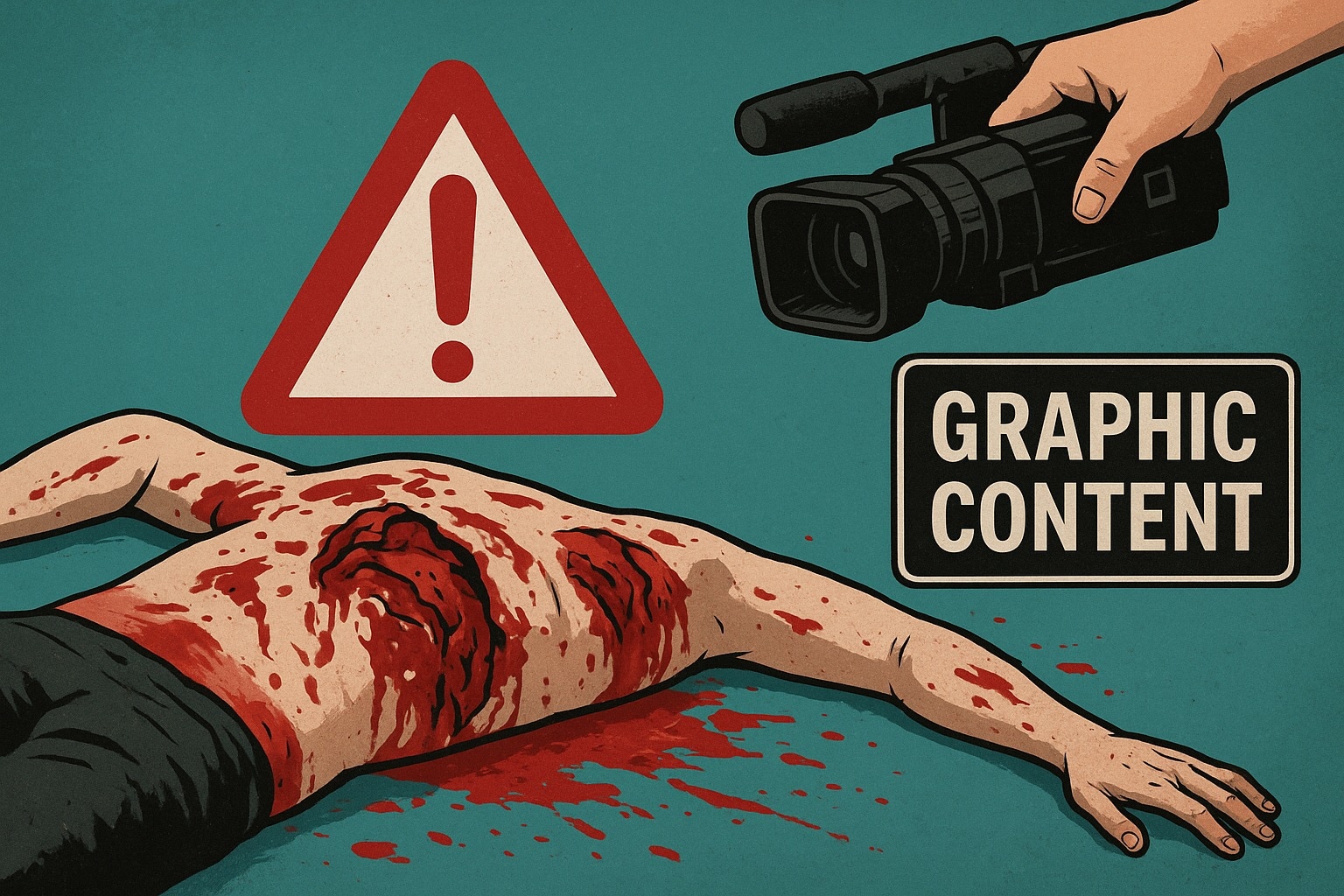
Always be transparent. If your footage is staged, say so clearly in the description or on-screen text.
Add a simple “Viewer Discretion Advised” or “Graphic Content” warning before the clip starts. This small step shows respect and gives people the choice to look away.
Ask yourself if the gore adds value. You need to make sure it informs, educates, or contributes to your story. If not, cut it.
Always read the guidelines before posting. If you’re unsure, tone down the visuals or blur sensitive parts to stay within the rules.
Label your content accurately. If it’s fictional, say so clearly that it’s staged or edited. Transparency earns long-term trust.
Make your titles and thumbnails interesting without lying. Curiosity is fine, but deception is not.
How to Create Gore Videos with Filmora With or Without Real Gore
If you are a content creator looking to create or edit gore videos that properly affect the viewers the way you want them to, while still keeping to community rules, knowing how to pick and use the right editing software is very important.
Fortunately, a video editing software like Wondershare Filmora provides you with all you need to create and edit gore clips. Below is a guide on how you can create gore videos using Filmora with or without real gore:
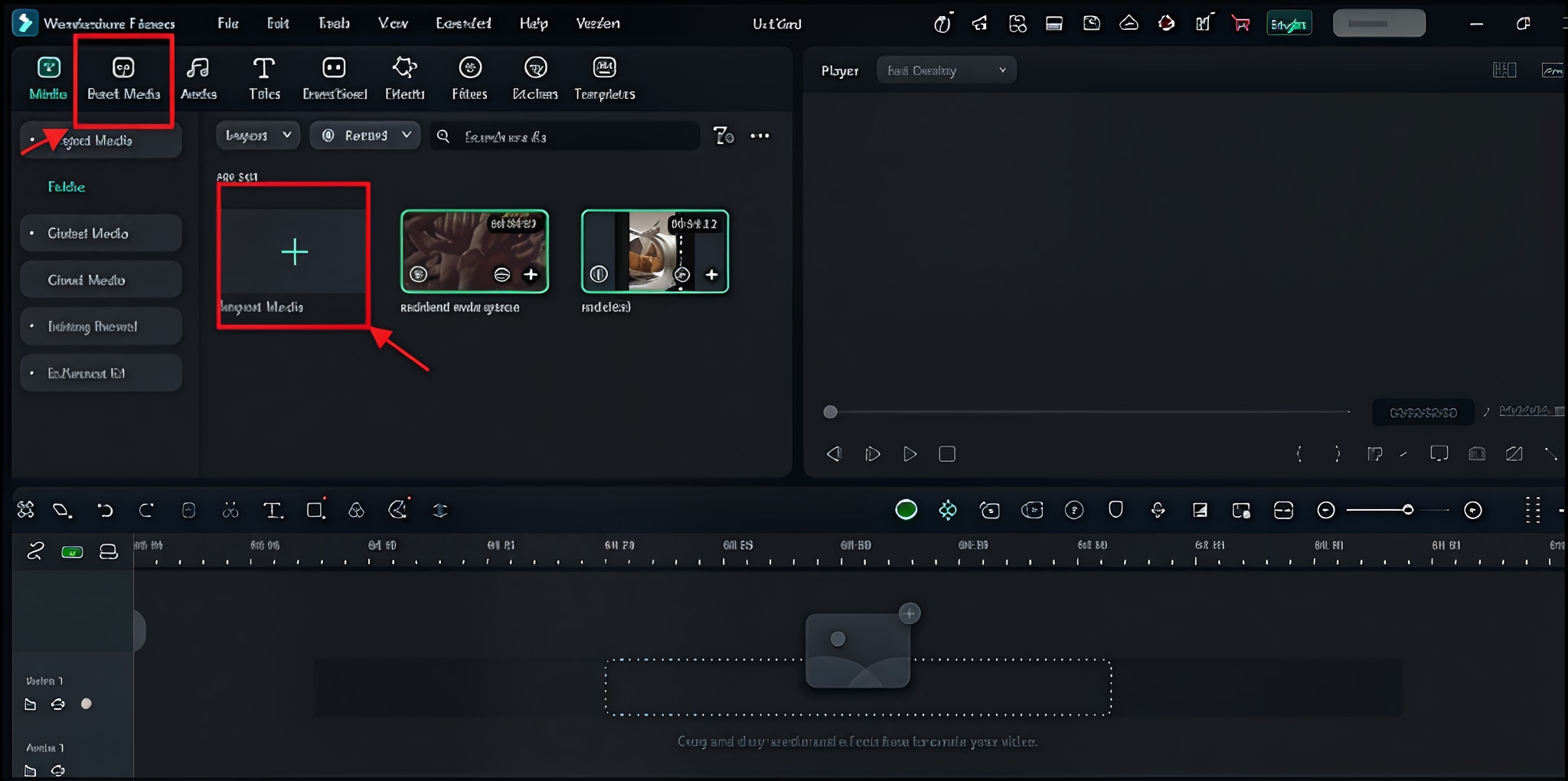
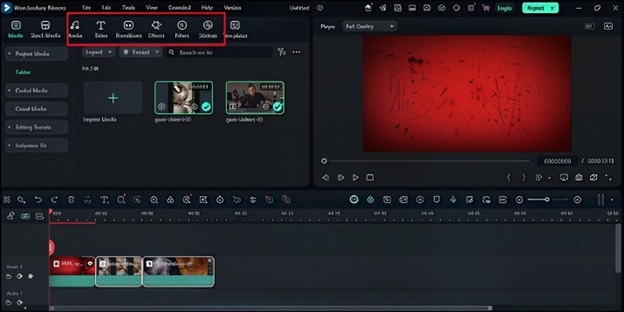

Legal & Ethical Boundaries of Using Gore in Video
When it comes to gore in videos, there's a fine line between legal use and exploitation. Let's break it down:
Ethical Boundaries
Ethical boundaries include:
- Always get permission or legal rights before showing someone, alive or dead.
- Avoid close-ups of injured or dead people to protect their dignity.
- Avoid re-traumatizing viewers, as graphic videos can trigger painful memories.
- Using real death or crime scenes for entertainment is unethical and often illegal.
Legal Risks
- Many countries have laws that ban videos that depict or promote extreme violence.
- According to specific platform policies and guidelines, social platforms may remove graphic content that lacks educational or news value.
- Using footage you don't own without permission may violate copyright laws and lead to lawsuits.
Conclusion
Using gore videos necessitates striking a careful balance between legal compliance, ethical responsibility, and creative intent. While some uses, like news reporting, teaching, or fictionalized scenes, might be allowed by law, it is unethical and illegal to take advantage of real-life suffering for shock value or financial gain. Before publishing, spend some time reviewing the rules and regulations if you create video content. Safeguard your creative integrity, your audience, and your reputation.




